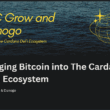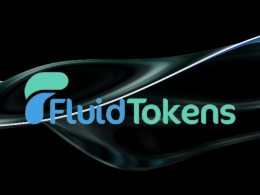There are almost 600 million people who speak Spanish in the world, of which 474 million are native Spanish speakers, while for 100 million it is their second language.
Spanish is the second most spoken native language in the world after Mandarin Chinese.
According to recent data, the countries with the largest Spanish-speaking population are Mexico (124.8 million), the United States (57 million), Colombia (50.6 million), Argentina (44.9 million) and Spain (43.6 million).
Spanish is the official language of 21 countries across the three continents of America, Europe, and Africa.
You can read How Many People Speak Spanish, And Where Is It Spoken?
The Cervantes Institute is the most important Spanish language organization and has predicted that the number of Spanish speakers in the world will increase to 754 million in 2050.
As for cryptocurrencies, the global adoption rate has continued to increase over the years. According to the report Global Crypto Ownership Reaches 562 Million People in 2024: New Report, the global user base of digital currencies reached 562 million people in 2024, compared to 420 million in 2023. This represents 6.8% of the world’s population, with 34% of cryptocurrency owners between 24 and 35 years old.
Latin America is the seventh largest cryptocurrency market according to the Chainalysis Index of 2022. Citizens of Latin American countries had a flow of $562 billion in crypto, from July 2021 to June 2022, which represents a growth of 40% over the total of the previous year.
Latin America is home to four Spanish-speaking countries in the top thirty in the 2022 crypto index: Argentina, Colombia, Ecuador, and Mexico. You can read more at Latin America’s Key Crypto Adoption Drivers: Storing Value, Sending Remittances, and Seeking Alpha
In a Chainalysis report, The 2023 Global Crypto Adoption Index: Central & Southern Asia Are Leading the Way in Grassroots Crypto Adoption, Argentina and Mexico are mentioned as the two Spanish-speaking countries that are among the 20 with the highest crypto adoption.
The Proposal
This proposal, presented at Project Catalyst’s FUND12, consists of a free webinar, in Spanish, that will cover the fundamentals of blockchain technology.
The applicant’s goal, for this webinar, is to introduce the audience to the Cardano ecosystem, while explaining how blockchains work and why they were created, what problem they are trying to solve, and how they are trying to achieve it.
This is not content to teach how to install a wallet, the objective is that at the end of this webinar, which lasts more than an hour, the audience acquires a solid base of knowledge about this technology, and why Cardano differs from the rest.
The proposal seeks to promote inclusive and equitable quality education, and equal learning opportunities, and reduce inequality within and between countries.
While the content is for beginners, it will delve into some topics.
It is proposed StreamYard to stream the webinar. StreamYard is a professional in-browser recording and live-streaming studio that records content or streams it live to Facebook, YouTube, and other platforms.
The webinar will be open and free and broadcast live once a month for six months on different days and times.
It will consist of six sessions, with a limit of 100 attendees per session, which will be recorded and hosted on YouTube and Odysee, so that anyone can watch later, whether they have been an attendee or not.
Participants will be able to ask questions at the end of each module. Once the 13 modules have been completed, a contest will be held with a prize, and USD 100 in ADA will be distributed among the three participants with the highest score. It will use Kahoot! for the contest, which is a Norwegian game-based online learning platform, making learning fun and engaging through competitive quizzes.
Each session will have 13 modules. The webinar is expected to last just over an hour, and extend to more than two hours, with questions from participants and the final questionnaire.
Modules
- Introduction
- What is a blockchain?
- The blockchain generations
- The blockchain trilemma
- What is a consensus algorithm?
- Accounting models
- What is Cardano?
- What is ADA?
- Cardano development methodology
- Cardano roadmap
- Cardano wallets
- Cardano nodes
- Liquid Staking
The Milestones
The proposal is divided into 6 monthly milestones, with webinars free and in Spanish, using StreamYard with at least three participants in each one.
Proof of the achievement of each milestone will be the session recorded and hosted on YouTube and Odysee.
The Budget
- Streamyard Professional USD 39 x 6 meses = USD 234
- Kahoot!+Start USD 3,99 x 6 meses = USD 23,94
- Prize USD 100 x 6 meses = USD 600
- Live webinar USD 100 x 6 instances = USD 600
- Research USD 100 x 13 modules = USD 1.300
- Script USD 100 x 13 modules = USD 1.300
- Presentation USD 100 x 13 modules = USD 1.300
- Quiz USD 100 x 13 modules = USD 1.300
Total USD 6.658
Total ADA 14,795.55 (*)
(*) USD/ADA = 0.45
Miscellaneous expenses = ADA 204.45
Total = ADA 15,000
The Applicant
Martin Ungar, the actor in this proposal, participated in a Space X explaining it to the Spanish-speaking audience.
He says he has been in the crypto space since 2013 when he started mining Litecoin, a decentralized and open-source blockchain that launched in October 2011, which was created by Charlie Lee, a former Google employee, as an alternative to Bitcoin with lower fees and faster mining process.
He is currently the operator of the Chichen Itza stake pool (ticker ITZA), Cardano ambassador, and creator of educational content on blockchain technology in Spanish.
Martín’s chronology on Cardano:
SPO of Chichen ITZA since epoch 256 (March 2021)
Cardano content creator from April 2021
Cardano Ambassador from July 2022
Adapulse writer, with more than 30 articles written to date
Cardano Summit in Buenos Aires co-organizer
The Interview
LiberLion: Hi Martin! I would like to tell the readers that we have known each other for a while now, and we also share a common space in AdaPulse, where we write articles. Please tell the readers a little about yourself.
Martin: Hi LiberLion! Thanks for covering my proposal in Project Catalyst Fund 12. Like you say we’ve known each other for some time now, meeting in one of Cardano’s telegram groups. I’ve been involved in Cardano since 2021, as a content creator of educational videos and writing articles about crypto. I’m also a stake pool operator and Cardano Ambassador.
LiberLion: How did you find out Cardano and what do you expect from this ecosystem?
Martin: I found Cardano in 2018 when I was researching new crypto projects. I was originally drawn to it by its academic and formal approach to its development. I used to mine Litecoin back in 2013, so the idea of ordinary people being able to operate a stake pool was an important feature to me. I may be too idealistic, but my expectation as a whole for crypto and Cardano in particular is that it has the potential to be a tool for safeguarding individual freedoms in an ever increasing authoritarian world.
LiberLion: I think this is your first proposal in Catalyst, correct me if I’m wrong, but what are your expectations?
Martin: This is actually my second proposal. I presented and got funded back in fund 9 with the proposal title “Onboard New Hispanic Ethereum Users” in which I produced 9 videos to onboard Ethereum users to Cardano. I hope to get funded again this time to be able to bring this webinar to life.
LiberLion: Oh great! I think you will be elected again with your new proposal. Briefly, what would you propose to evolve the Cardano ecosystem?
Martin: Again, I might be too idealistic, but I think that the community is missing the forest for the tree. When I started actively participating in the Cardano community the goal was to take Cardano to the margins, be the financial operating system of the world and have liquid democracy. But instead it seems we are just building a plutocracy for entrenched insiders to get richer.
I thank Martin for his time.
You can see the proposal: Introduction to Cardano – Free Webinar in Spanish
You can see his complete material at Linktree










